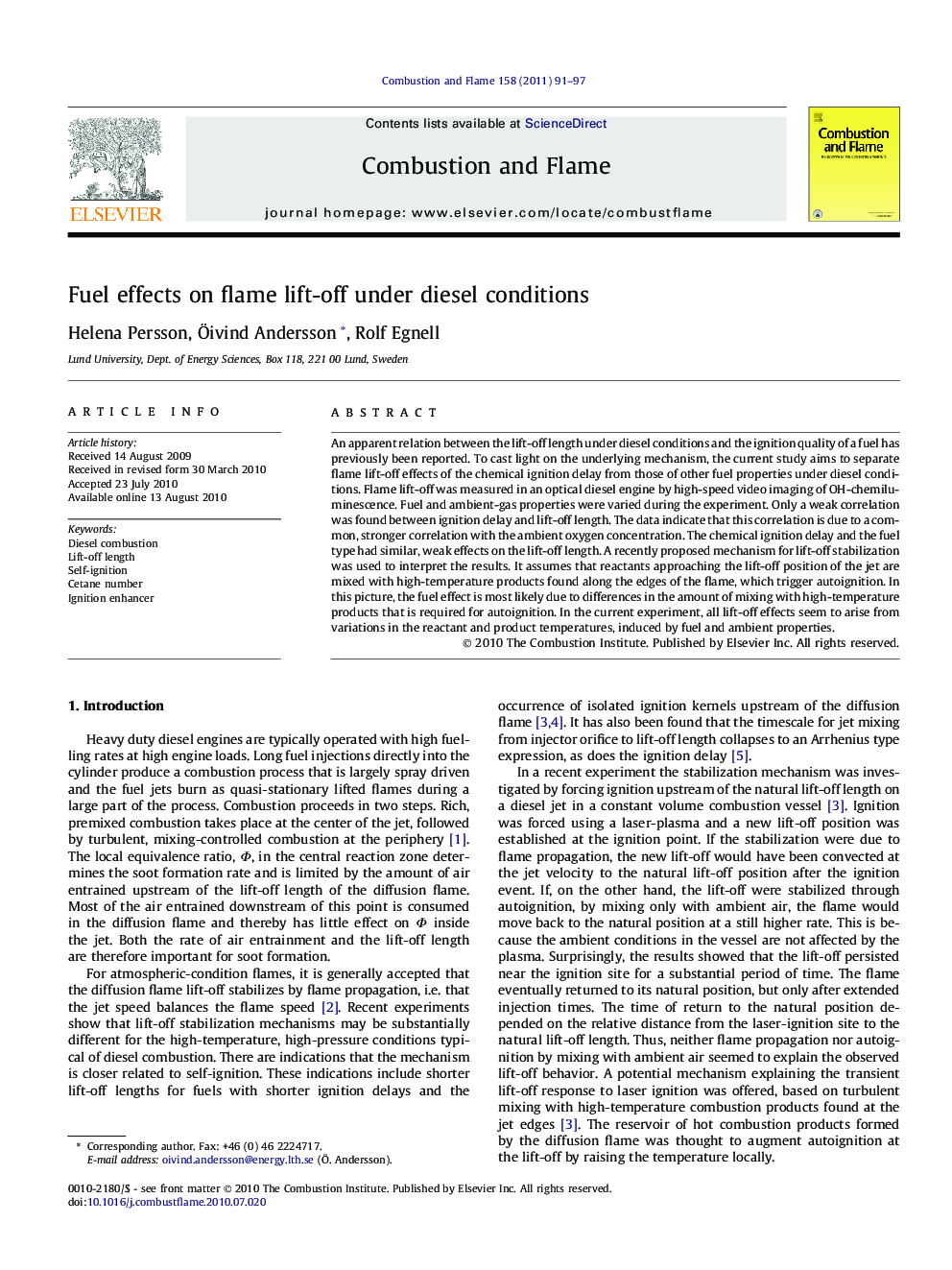| Article ID | Journal | Published Year | Pages | File Type |
|---|---|---|---|---|
| 169547 | Combustion and Flame | 2011 | 7 Pages |
An apparent relation between the lift-off length under diesel conditions and the ignition quality of a fuel has previously been reported. To cast light on the underlying mechanism, the current study aims to separate flame lift-off effects of the chemical ignition delay from those of other fuel properties under diesel conditions. Flame lift-off was measured in an optical diesel engine by high-speed video imaging of OH-chemiluminescence. Fuel and ambient-gas properties were varied during the experiment. Only a weak correlation was found between ignition delay and lift-off length. The data indicate that this correlation is due to a common, stronger correlation with the ambient oxygen concentration. The chemical ignition delay and the fuel type had similar, weak effects on the lift-off length. A recently proposed mechanism for lift-off stabilization was used to interpret the results. It assumes that reactants approaching the lift-off position of the jet are mixed with high-temperature products found along the edges of the flame, which trigger autoignition. In this picture, the fuel effect is most likely due to differences in the amount of mixing with high-temperature products that is required for autoignition. In the current experiment, all lift-off effects seem to arise from variations in the reactant and product temperatures, induced by fuel and ambient properties.
